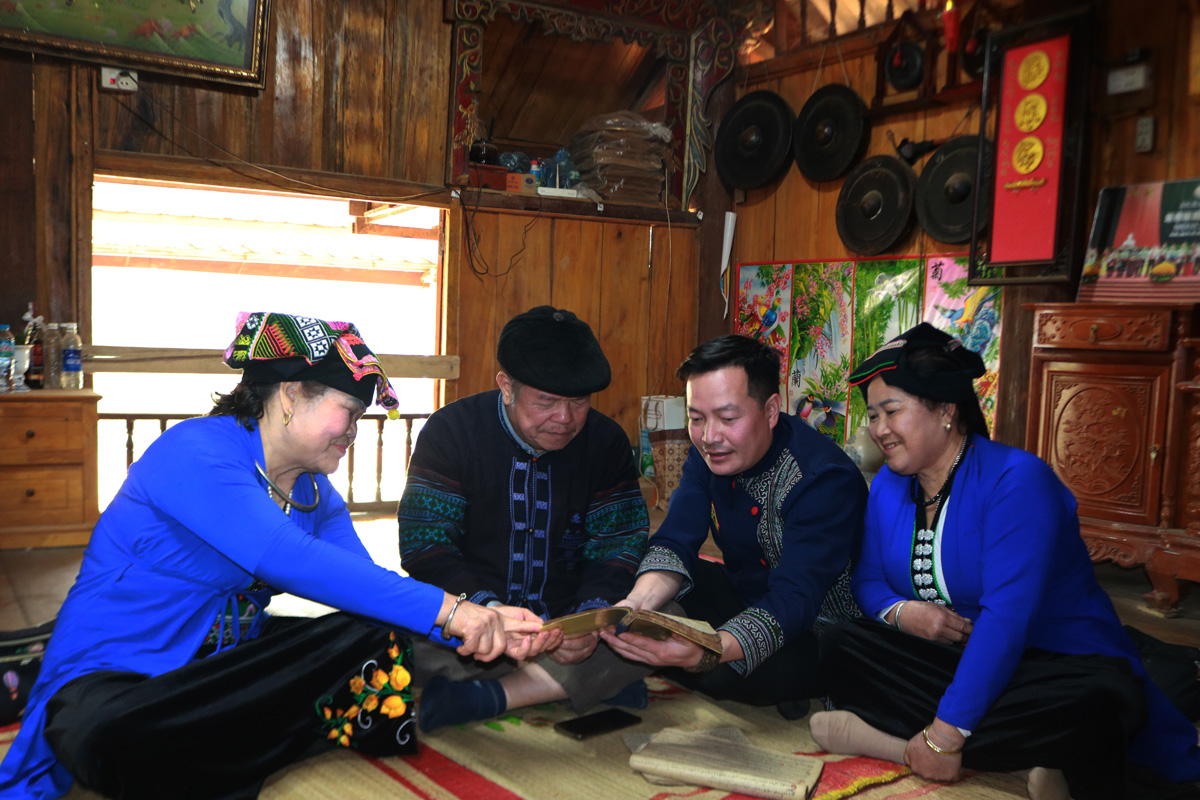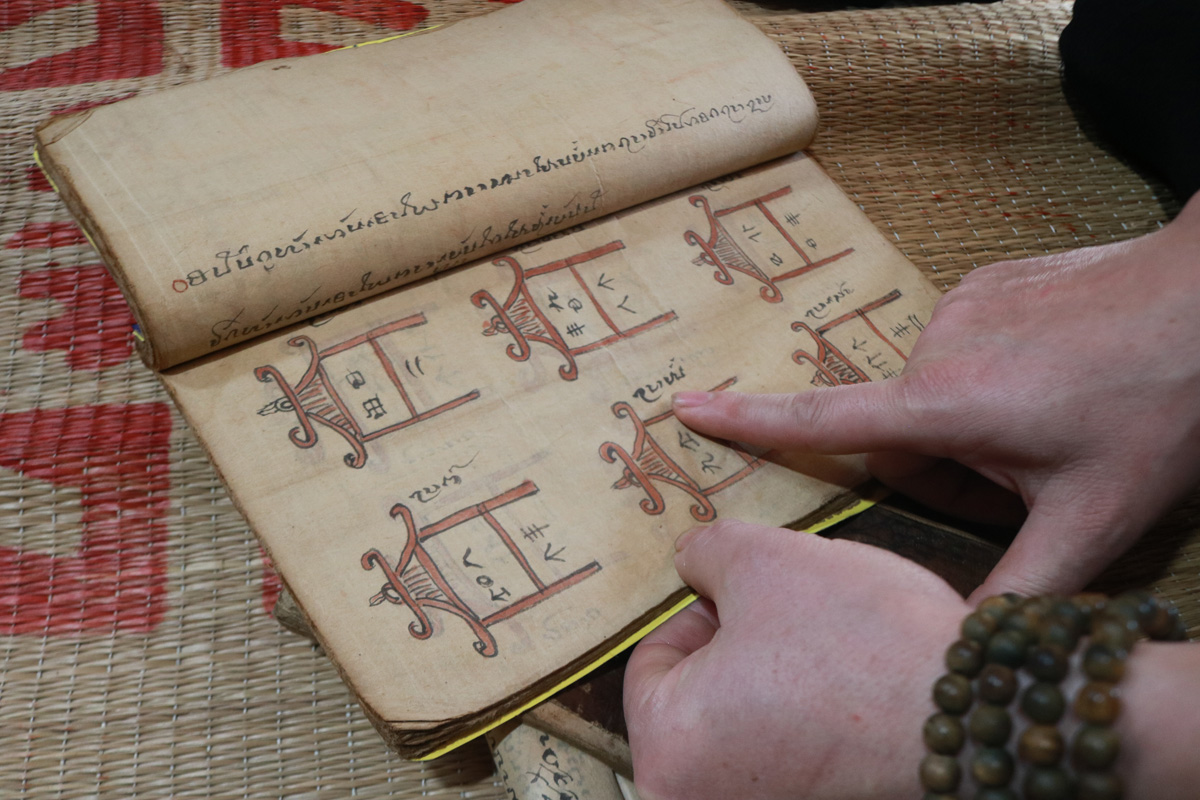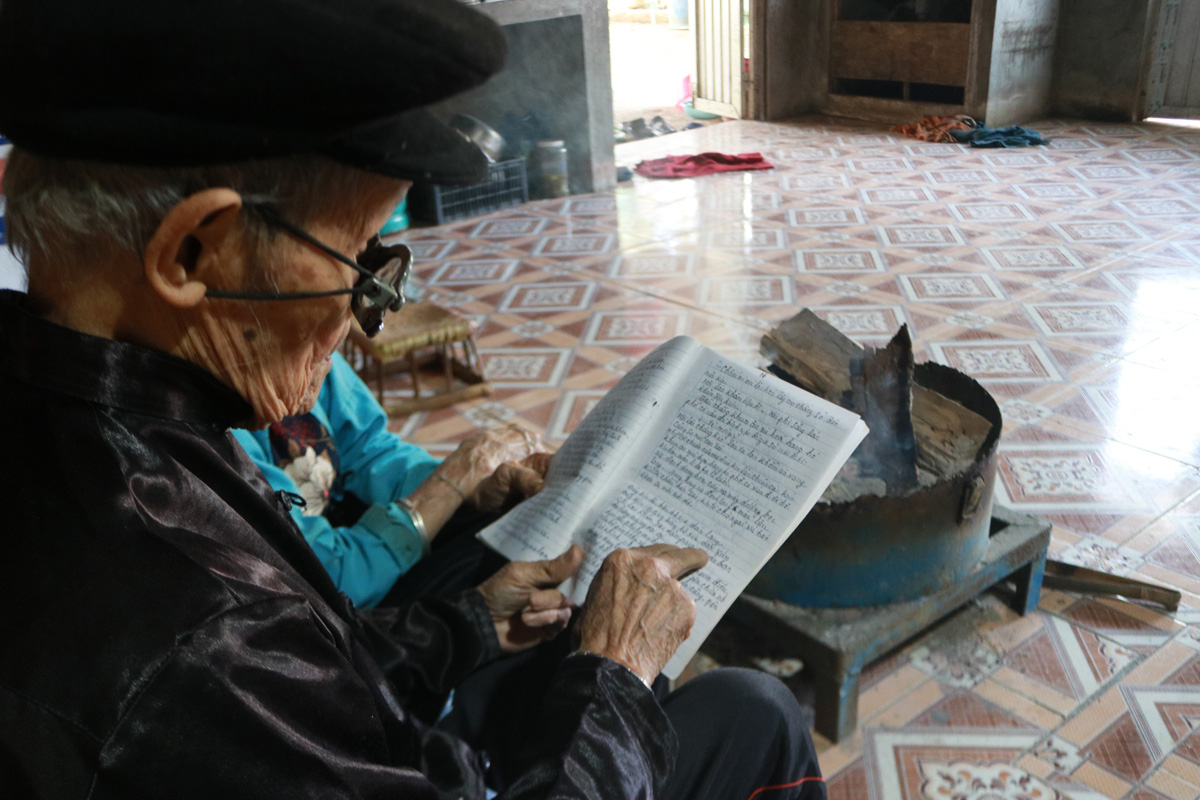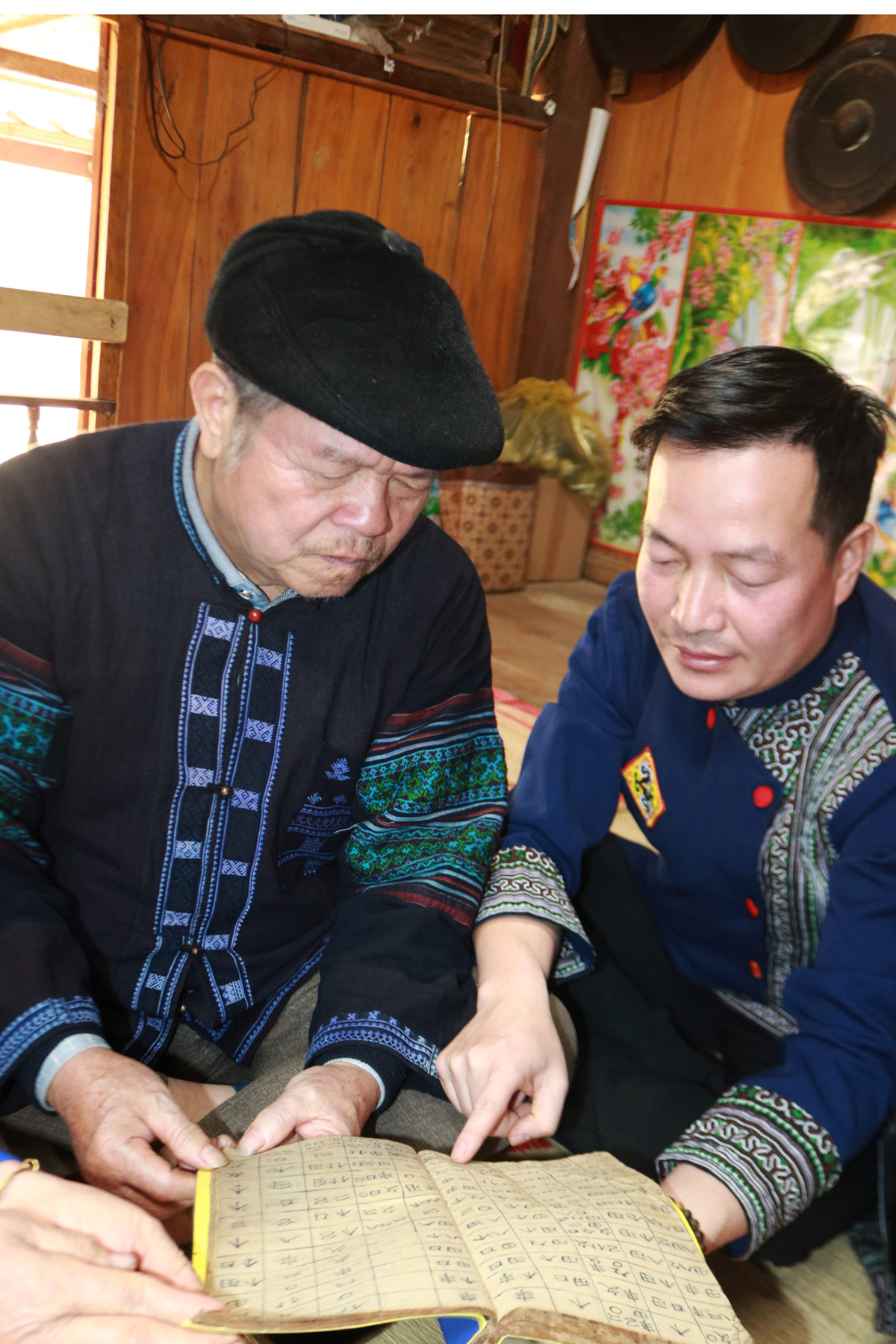
This belief is both a guiding principle and a lifelong ambition for Sa Van Cam, a member of the Tay ethnic group in Da Bac district and a passionate advocate for the Tay culture. The native has devoted years to the revival, preservation, and teaching of the ancient Tay script.
Since 2010, Cam has organised seven classes on the script, attracting over
200 learners from Muong Chieng commune and nearby areas. His initiative on
preserving and promoting the cultural identity of the ancient Tay script earned
him provincial authorities’ recognition in 2024 as an exemplary figure in the
cultural sector.
In a traditional stilt house imbued with the
Tay heritage, Sa Van Cam (second from right) passionately guides elderly
villagers in Muong Chieng commune through reading ancient Tay texts preserved
in centuries-old manuscripts.
For years, Sa Van Cam has painstakingly
collected and studied rare documents written in the script, considering them
the cultural essence and spiritual treasure of the ethnic community.
The distinctive letters and symbols, recorded
in centuries-old books, reflect the worldview and philosophy of the Tay ethnic
group in Da Bac.
With the Tay ethnic group making up
approximately 41.57% of Da Bac's population, even the oldest villagers no
longer remember the script’s origin. However, one truth remains: to thoroughly
understand the Tay culture, one must know how to read the Tay script.
Sa Văn Cam’s tireless efforts in carrying out
his initiative aim to strengthen community bonds, ensuring that this cultural
essence of the community is conserved and disseminated.
Nestled halfway up the mountains in Cao Son commune, Da Bac district, Sung village appears like a picture preserved intact through generations. With a history of over 300 years, the village is home to nearly 100 households of Dao Tien ethnic group – the people who still maintain their distinctive characteristics in housing architecture, clothing, customs and traditional crafts. The village is drawing increasing interest and exploration from both domestic and international tourists, as every visit becomes a cultural journey to experience the authenticity, friendliness, and hospitality of this highland region.
This Spring, more than 1,000 phoenix trees in Thang Hamlet, Thach Yen Commune (Cao Phong) have bloomed brilliantly, quickly spreading on social media. The picturesque beauty of the flower garden has attracted the participation of many people to admire and take photos.
Located just 25 km from Hoa Binh city and approximately 100km from Hanoi, with a journey of around 1 hour 45 minutes, Ngoi Hoa ecotourism site (PriorBay Resort) in Suoi Hoa commune, Tan Lac district, is a stunning peninsula retreat, and a standout destination within the Hoa Binh Reservoir tourism area. Officially opening in February this year, the resort captivates visitors with its distinctive vacation products and a range of exciting adventure experiences.
Over 1,500 women paraded in traditional ao dai (long dress) at Hoa Binh Square on March 5 to mark Ao Dai Week 2025 launched by the Vietnam Women's Union. Organised by the provincial Women’s Union in collaboration with the city’s chapter, the annual event features lively folk dance performances and a colorful parade that celebrated the beauty of Vietnam’s traditional dress and its rich cultural heritage.
With skillful and meticulous craftsmanship, H’Mong women in Pa Co Commune, Mai Chau district carefully carry out dozens of manual steps to weave skirts, bags, scarves… with vibrant colors. They continue to preserve the traditional brocade weaving, transforming these products into tourism goods while also promoting the H’Mong people's unique cultural beauty.
The image of players wearing "shorts and numbered shirts” is very familiar at the football tournaments. At Khai Ha festival in Khang Vat hamlet, Thuong Coc commune, Lac Son district, the fans, tourists and people witnessed a unique image when the Organizing Committee issued a regulation: the female participants must wear Muong skirts.







